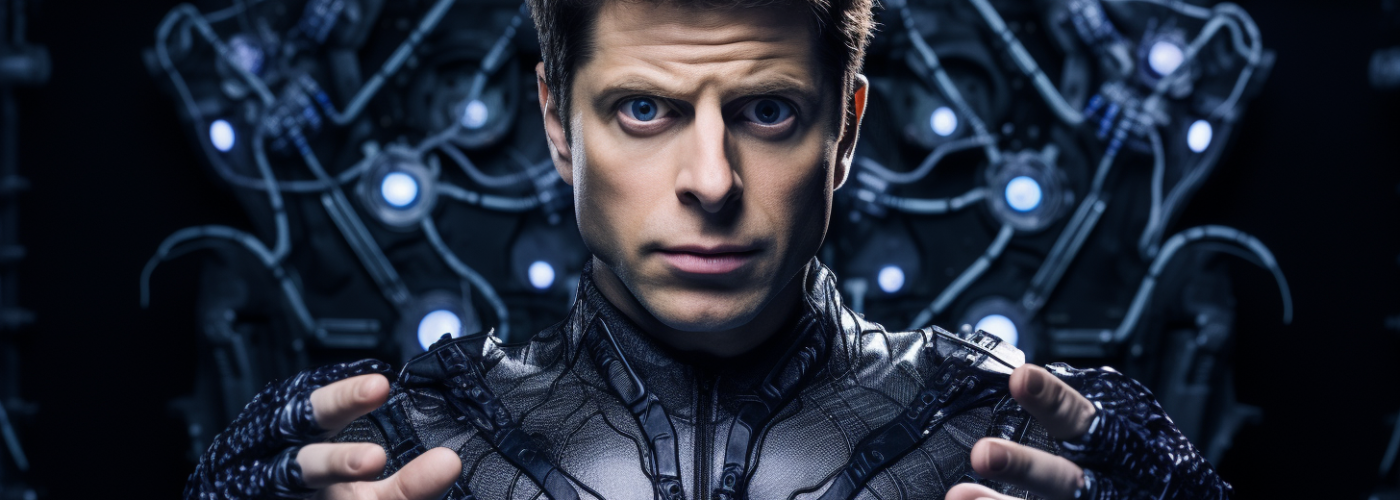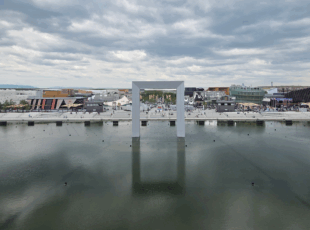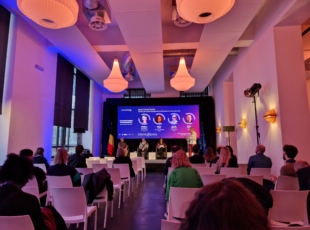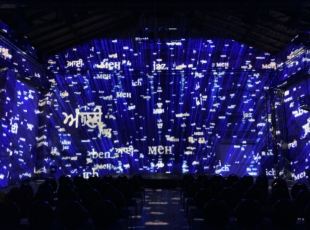Sam Altman, the indomitable bogeyman of OpenAI

Article author :
A sequence worthy of the best suspense series has just taken place at OpenAI. The powerful American company, founder of ChatGPT, has in barely five days fired and rehired its creator and CEO, Sam Altman, following an incredible turnaround of events.
‘We have reached an agreement in principle for Sam Altman to return to OpenAI as CEO.’
The sentence dates from November 22. In other words, five days after another press release issued by the firm specializing in artificial intelligence, which had an entirely different tone. ‘Sam Altman departs the company […] the Board of Directors no longer has confidence in his ability to continue leading OpenAI.’
Between the two, complete chaos and a sequence of events which almost led to the total wipe-out of the currently most in vogue technology and digital company.
Sam Altman, out of control genius
The main actor of this saga is, of course, the eccentric founder of OpenAI. Aged 38, considered a genius of digital tech, Sam Altman is one of those people who are capable of changing the world all on their own. Having made his fortune selling a mobile phone app based on geolocation which he launched when barely nineteen years of age, it was with Elon Musk, among others, that he founded OpenAI, an organization researching artificial intelligence.
The company was established as a non-profit entity and the Chicago-born Altman viewed it as the opportunity to drive his ultimate dream: designing an artificial general intelligence powerful and developed enough to aid humanity in achieving significant advances in various domains such as health, education and productivity, and to meet challenges as crucial as climate change.
Little by little, Sam Altman stamped his distinctive mark on the company and took over its genuine leadership. His delusions of grandeur impressed as much as they raised red flags. Because, in order to achieve his goals, he didn’t hesitate to change the status of the company, transforming it from a non-profit organization into a commercial subsidiary . A change which sparked the first bout of turmoil, leading to Elon Musk, the eccentric head of SpaceX and Tesla, resigning from the board of directors.
But that’s not all. Sam Altman dragged OpenAI towards an increasingly significant partnership with the American tech giant Microsoft and also travelled to countries in the Arab peninsula to unearth additional funding to achieve his goals. Debatable position taking which caused friction within the company’s governance bodies.
The fear of a humanity destroying AI
But the most important bone of contention came to the fore after the release of ChatGPT in 2022. As a reminder, this groundbreaking type of artificial intelligence developed in the form of a conversational programme is capable of suggesting answers to questions, completing sentences, translating texts, writing articles and holding conversations with human beings.
The power and the incredibly rapid evolution of this model took the whole world by surprise, both opening up previously unimaginable possibilities and equally engendering numerous questions and fears regarding the potentially catastrophic impacts such a programme could give rise to.
And it was precisely on this point that a significant rift was very rapidly created amongst the pioneers of this technology. On the one side were found those who, like Altman, think that artificial intelligences such as ChatGPT should be rolled out to the wider public so that they may be constantly tested and perfected thanks to mass-scale and regular use.
On the other side were lined up numerous specialists in the domain, including several members of OpenAI’s board of directors, who for their part fear that such a tool could quite rapidly become uncontrollable and lead to a global disaster, and even to the pure and simple eradication of humanity. (No, you are not watching the new Terminator, we are in fact talking of genuine and corroborated fears expressed by experts in the sector.)
The bolt from the blue, on November 17
Even though this difference of opinion as to which direction to opt for grew increasingly stark between Altman and several of his fellow shareholders, nobody foresaw the decision taken by the board of directors on Friday, November 17. Not even the main interested party.
It was by video conference that he was informed he was being removed as the company’s CEO. The words used were harsh and unvarnished: ‘Mr. Altman’s departure follows a deliberative review process by the board, which concluded that he was not consistently candid in his communications with the board, hindering its ability to exercise its responsibilities. The board no longer has confidence in his ability to continue leading OpenAI.’
The attempted coup was brutal and clear in its aims. It sought to remove Sam Altman from the decision-making process and implement root-and-branch reform of the evolution model of the various artificial intelligences developed by the company.
But what the board of directors didn’t see coming was the incredible and ultra-rapid succession of events which would follow this ousting.
Barely a few hours after having been dismissed, Sam Altman was contacted by Microsoft, which offered him the opportunity to take charge of his own department dedicated to artificial intelligence. Into the bargain, full powers and increased earnings. The negotiations were vigorously carried out and on November 20, thus scarcely three days after his forced departure, Altman retweeted the announcement made by Satya Nadella, the Microsoft CEO: ‘We’re extremely excited to share the news that Sam Altman and Greg Brockman, together with colleagues, will be joining Microsoft to lead a new advanced AI research team. We look forward to moving quickly to provide them with the resources needed for their success.’
OpenAI on the edge of the abyss
But that was not the end of the setbacks for the OpenAI administrators. Following the announcement of Altman’s departure, a vast wave of discontent swelled amongst the ranks of the company’s personnel. Several hours later, it was by means of a press release that 730 out of the firm’s 770 employees jointly announced that they were all threatening to quit the OpenAI ship to join their now former CEO at Microsoft. The only way to get them to change their minds was to rehire Altman in his previous post.
The company’s board no longer had much leeway. In losing almost the entirety of its specialists, OpenAI was running headlong to its own destruction. Little by little the various decision-makers took a position and resigned themselves to going back on their decision.
They made Sam Altman an offer to resume his role as the CEO. But that’s not all; three of the four members of the board of directors who voted for the deposing of OpenAI’s strongman were themselves asked to leave the governance body. The retraction was complete. Altman’s power as the company’s leader was for its part strengthened.
And now?
What is now to be expected of this thunderous return? A first pointer was delivered by Sam Altman himself in his tweet of November 22: ‘I love OpenAI, and everything I’ve done over the past few days has been in service of keeping this team and its mission together. When I decided to join Microsoft on Sunday evening, it was clear that was the best path for me and the team. With the new board and with Satya’s support, I’m looking forward to returning to OpenAI, and building on our strong partnership with Microsoft.’
The tone has thus been clearly set. It’s full steam ahead that Altman will pursue his immoderate ambition. And the consequences? Only time will tell.
A story, projects or an idea to share?
Suggest your content on kingkong.
also discover

From Belgium to Japan, the new territories of creative digital creativity

Stereopsia, the key European immersive technologies hub

NUMIX LAB 2024: creating bonds and building the future of digital creativity


